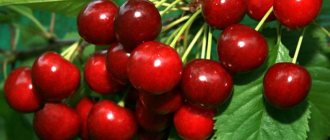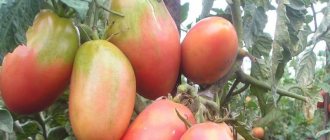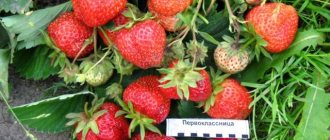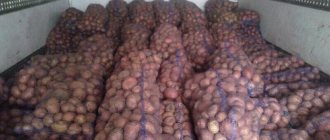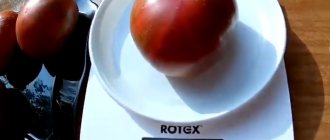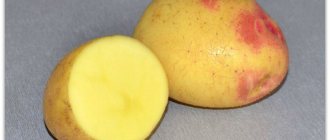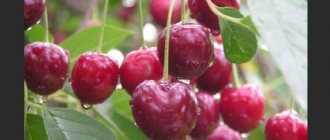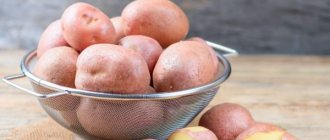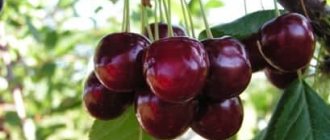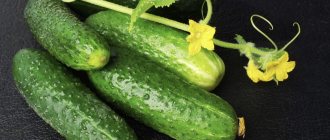Cherry Rovesnitsa: variety description and characteristics
Fruit cherry Coeval: photo of the variety
Cherry variety Rovesnitsa is considered one of the most popular plantings among modern amateur gardeners, as well as among experienced breeders. There are reasons for this:
- this variety produces a very abundant and tasty harvest
- Cherries of the Rovesnitsa variety can adapt to a temperate climate and tolerate even not the most favorable conditions that sometimes arise.
In this article we will dwell in more detail on the description of the Rovesnitsa cherry variety and talk about some of its features and subtleties. Cherry of the same age tolerates dry periods well, and also calmly tolerates too sharp temperature changes and frosts, in which rarely any plants can fully open up and demonstrate the best results in yield and fruiting.
The Rovesnitsa cherry variety was bred by Russian breeders, and one of the outstanding authors who came up with the idea of crossing the Beauty of the North and Black consumer goods is A.F. Kolesnikova. The variety took over from its parents all the brightest and most positive characteristics. These are sweet and large fruits, and resistance to some common and, undoubtedly, very dangerous fungal diseases.
Also, the Rovesnitsa cherry variety is resistant to drought and frost and does not lose its charm and strength. The tree looks quite attractive and decorative, and you can’t help but pay attention to it. Among the advantages of the variety are the following:
- frost resistance of cherry planting - a seedling and an adult tree can easily tolerate a temperature drop of up to -25 degrees, and show absolutely no negative reactions to such changes in climate
- berries have a universal purpose - they can be used fresh immediately after picking, or you can prepare dishes, desserts, preserves and jams, compotes, drinks, juices, wines from them
- The Rovesnitsa fruit cherry variety is resistant to the most common diseases and is practically not attacked by pests, insects and rodents
- The variety can be propagated in different ways - by rootstocks, seeds, and vegetative methods. The result will be equally positive, so you should think about this when choosing certain plantings
- The Rovesnitsa cherry variety has high commercial qualities and excellent characteristics. Cherries are great for selling, they look great and their taste is highly rated
- The yield of cherries of the same age is high, even if the gardener is not able to give the variety enough attention and support. The berries are very appetizing, and they look simply wonderful - they have a universal table purpose, which means the gardener can use them in accordance with any of his desires and needs.
History of the variety's creation
Cherries appeared at the All-Russian Research Institute for Breeding Fruit Crops (VNIISPK). Scientists A.F. Kolesnikova and G.B. Zhdanov crossed the following varieties:
- productive and frost-resistant consumer goods black;
A variety of cherry with excellent taste, consumer goods black, was developed by Michurin himself
- disease-resistant variety No. 11, which has a good fruit taste.
In 1975, cherries were put to variety testing, in 1986 they were allowed to be grown in the Central Black Earth region and quickly gained popularity there. Since 2006, Rovesnitsa has been undergoing variety testing in Belarus, where it is also widely grown.
Description of fruits of the cherry variety Rovesnitsa, yield
Cherry Coeval: photo of the variety
The fruits on the Cherry Tree of the same age are quite large - something that corresponds to a cherry variety. They have a flat-round shape, the skin is painted in a deep dark burgundy shade. On average, the weight of one cherry berry can be approximately six grams, the pulp is homogeneous in its own structure, average if you evaluate the density, but many say that the fruits are quite hard and dense. The pulp also turns dark red, the juice is rich in color and just as tasty when it comes to taste. The stalk is shortened, but quite thick, strong, it can be easily picked when the fruits reach their consumer maturity, but in other situations, in principle, the fruits do not fall off, and this is a huge plus. The seed is of medium size and is separated from the pulp by half, but in general, gardeners do not face any particular difficulties when processing the crop, and this is a huge plus.
The berries of the Rovesnitsa cherry variety have a pleasant sweet and sour taste, not cloying. Universal purpose means that cherries can be eaten immediately after the harvest has been harvested from the site, or they can, in principle, be consumed when they are processed. In addition, you can prepare preserves and jams, drinks - juices, wine, compotes. The taste of cherries goes well with the taste of other fruits, which is also a noticeable plus. Gardeners greatly value the variety due to the fact that it is completely unpretentious and not capricious. We will talk about agricultural technology, planting, and care later in this article.
The Rovesnitsa cherry variety has several striking and key characteristics that you should definitely pay attention to just in order to be able to decide for yourself whether the gardener wants to see this planting on his own plot, or whether he would like to take other varieties and seedlings, which will be beneficial to him. The cherry variety in question is characterized as a mid-ripening variety, the fruits ripen in July, but if you plant a tree in the southern region, then there is a high probability that the fruits will reach their consumer maturity at the end of June, which means that gardeners will receive ripe and tasty berries much earlier. Many indicators also depend directly on how the planting was grafted. If this was an antipka grafting, then fruiting of cherries begins in the fourth or fifth year after planting the seedling in open ground. Also, this vaccination will be characterized by its precociousness at a very high level. Of course, the choice of grafting and when exactly he would like to get his own harvest will depend on the gardener himself.
Cherry Rovesnitsa also produces a plentiful and very regular harvest, it is of very high quality and quite tasty. From one mature tree you can harvest almost sixteen kilograms of harvest, and gardeners note that sometimes this is not the highest indicator at all, and that the yield can be even higher. But here it all depends on the conditions in which the cherry variety grows, whether the gardener himself was able to give the planting everything it needed, and how much agricultural technology was observed in accordance with all rules and regulations. It is important to know very subtle aspects and nuances in plant care, and if you take these points into account, it will be possible to get a harvest even where the initial climatic conditions are not very favorable. Next, we will dwell in more detail on the description of the plant and how to care for the plantings in the future.
Fruit cherries of the Rovesnitsa variety are distinguished by a high level of quality, since each cherry is very elastic, bright, sweet, without any unpleasant or tart taste impurities. Gardeners rate the variety very highly also due to the fact that, in general, these plantings are of high quality and universal. The fruits are excellent fresh and combine wonderfully in taste with other berries or fruits. You can use them to prepare dishes and drinks, juices and wines, compotes, sauces, preserves and jams. It is also worth mentioning that the fruits contain a large amount of useful substances - acids, vitamins, microelements, peptides. All of them have a beneficial effect on the general condition of the human body and can help fight diseases, increasing immunity and stress resistance. The variety can be grown on private plots, or can be cultivated on a large industrial scale. With all this, the fruits are perfectly stored for a long time and can be transported over long distances.
In this regard, the Coeval cherry is indeed very advantageous, because the gardener does not always have enough time to care for the plantings and give them everything they need, and therefore trees that are more or less independent in this regard are excellent helpers. Next, I would like to dwell in more detail on the description of caring measures, the intricacies of planting and agrotechnical requirements. This is a winter-hardy variety that can withstand temperatures down to -38 degrees, and the buds and leaves will not be damaged. This means that the yield of the variety will remain absolutely stable and excellent.
Features of cultivation
The unpretentious variety does not create problems for gardeners during cultivation; it is a typical representative of the crop and does not require any special agricultural technology. The following nuances can be highlighted that need to be taken into account when growing:
- In regions where cherries grow, they are planted in the spring; you should not take risks with autumn planting, since the seedling may freeze in the winter. During mass cultivation, trees are placed at a three-meter distance with five-meter row spacing; in amateur gardens, when planting several trees, row spacing can be reduced to 4 m.
- The drought resistance of the variety allows you to get by with a minimum amount of watering: before flowering, twice after flowering, as well as moisture-recharging autumn watering.
- Nutrients are added standard, according to the usual scheme:
- in spring organic and nitrogen mineral fertilizers;
Nitrogen mineral fertilizers and organic matter are necessary for cherries in spring
Cherries need to be fed with superphosphate in the fall.
To form the crown of low cherries, a bush-like formation is often used.
Otherwise, the growing conditions, the process of planting and caring for plants have no special features.
Video: rules for pruning cherries
Cherry Coeval: selection of seedlings, planting
The Rovesnitsa cherry variety has a very presentable appearance and excellent taste characteristics. But, at the same time, it is worth remembering that you can achieve excellent results on your site only if the gardener takes care of the plants and does everything possible to ensure that the cherries are surrounded by care and attention. But you should always start with the basics - with the selection of planting materials. Seedlings are chosen only those that have vitality and that do not have any damage. It is best to take two-year-old seedlings, as it will be easier for them to adapt to new conditions and take root. The choice of time for planting (autumn or spring) depends mainly on the region in which the plant will grow. If this is the southern part of Russia, then planting can be scheduled for autumn, but if this is the central or northern part, it is recommended to plant seedlings in the spring. Then they will probably have time to adapt, will not be subject to frost, and will generally feel as comfortable as possible.
Before planting, cherry seedlings of the same age are carefully examined for damage or disease. If suddenly the root system or its parts are affected, then they must be carefully removed. The cut areas must be treated with activated carbon so that bacteria no longer penetrate there. Next, the seedling is sent to open ground, it is planted in a hole, and a peg is installed nearby. The stake is necessary in order to support the planting, and also to ensure that when the wind blows, the seedling does not break or be damaged. The root collar should protrude about three to four centimeters above the soil surface.
The complete algorithm for planting cherry varieties of the same age is as follows:
- the gardener selects healthy and healthy seedlings and examines them from all sides. Before planting, the seedlings are placed in a growth stimulator - root for several hours.
- The seedling is placed in a pre-prepared hole, which is filled with fertile soil. A peg is driven into the center, which will become a future support for planting. The mixture is poured around the peg in the form of a mound, and the seedling itself is placed on the mound.
- Experienced gardeners recommend planting not alone, but together - one person will support the seedling from above, and the second will carefully straighten the roots. Next, they begin to add soil to the roots; this should be done carefully, constantly shaking the seedling. This must be done to ensure that air pockets do not form around the roots, which will lead to the formation of cavities and the development of pathogenic bacteria.
A cherry seedling of the same age is tied to a peg, and this is done carefully. This can be done from the north side of the peg strictly vertically - the seedling should not deviate anywhere, otherwise this will lead to the tree growing unevenly and unevenly. Then the gardener monitors how the seedling takes root, how it adapts and takes root in new conditions. It is extremely important to maintain the vital activity of the planting and mulch the tree trunk circle. Mulch performs several functions - it protects the planting from attack by bacteria, and also prevents moisture from evaporating from the soil too quickly. In addition, thanks to mulch, the required amount of heat is retained in the soil, which is also very important for the overall condition of the planting.
Care after planting the Rovesnitsa cherry variety
After planting the Rovesnitsa cherry seedling has been completed, an earthen roller should be made around the entire circumference. It should be located approximately 25 centimeters from the main trunk, and thanks to this roller the space will be designated for full watering of the plant. It is recommended to water the seedlings with settled water at room temperature. In general, the root system of a plant is considered very delicate and vulnerable, and therefore it is still recommended to be very careful about both the watering process and fertilizing. They are part of agrotechnical measures, just like pruning, fertilizing, harvesting, and planting rejuvenation. Cherries do not tolerate transplantation, so initially the gardener should make sure that the planting area is as comfortable and well-lit as possible. To water one cherry seedling, the gardener will need about two or three buckets of water, but be sure to take into account temperature indicators and conditions, because otherwise the planting will feel less comfortable, and in general the growth and development of this cherry seedling may noticeably slow down. Because of this, the fruiting periods will shift.
When the Coeval cherry matures, the agricultural technology can be changed a little. For example, it is worth increasing the number of waterings - at least three times per season. You should also focus on climatic and weather conditions, the amount of precipitation and the duration of dry periods. Only taking into account all the external features, as well as taking into account the state of the planting, will it be possible to create the most favorable watering schedule that will meet all planting requirements. The first watering should be scheduled for the time when flowering ends. The second time the cherries are watered after the fruits have gradually filled in and when they begin to gradually ripen. At this time, they really need watering so that they can become juicy and large - something that corresponds to the varietal indicators and characteristics. The third watering should be carried out at the very beginning of October, after the leaves have fallen and the planting must be prepared for the winter period.
You should remember to loosen the soil after watering throughout the growing season. Also, the tree trunk circle should not only be loose (to allow oxygen and moisture to pass through), but also cleared of weeds and other excess vegetation. This may not have the best effect on the condition of the plantings, their characteristics and properties, and therefore it is still worth paying as much attention as possible to some issues and issues related to the hygiene and aesthetics of the sites.
I would like to say that there are step-by-step instructions for planting a cherry tree. If the gardener follows it, then he will have an increased chance of creating a very rich, tall and productive planting. The most important thing is that, in general, even a gardener who does not have any specific and very rich experience in planting plants can cope with this algorithm. Only by observing the conditions, the gardener will be able to achieve the maximum that the planting will be capable of. But there are some points that must be observed. These aspects include the following:
- recommended time frame for planting a cherry tree
- a suitable place in which the planting will feel comfortable and develop in accordance with the requirements of the variety
- adjacent to a cherry tree planting
- selection of healthy and viable planting material, preparing it for planting in open ground
- algorithm and subtleties of landing
- subsequent care of the plant so that the plant lives and bears fruit as long as possible, despite external conditions and characteristics.
If a gardener is unable to follow all the rules, then, in principle, he may not worry too much about this. This is a very stress-resistant cherry variety, which, in principle, can forgive some mistakes and shortcomings in care. But you should still pay attention to the plant as often as possible, inspect it, monitor trends in growth, development and fruiting. And in this case, success will accompany the gardener everywhere and always.
Growing principle
Despite the fact that the plant tolerates low temperatures and long-term lack of moisture, cherries have certain requirements for the growing zone.
Choosing a landing site
The landing site must meet the following conditions:
- flat surface or with a slight slope to the south;
- protection from northern winds;
- sufficiently lit;
- no flooding at any time of the year.
The optimal location is considered to be a zone containing loams and sandy loams with normal acidity.
Landing
The pit for planting is prepared 2-3 weeks in advance. Seedlings should be located at a distance of 3-5 meters. The depth of the pit is 80 centimeters, width is 70 centimeters. First, crushed stone (another material to form a drainage layer) is poured into the planting site, and then humus with compost, black soil and peat. After this, the pit is filled with sand (the ratio with other components is 1:2).
For several hours before planting, the roots of the plant are soaked in a Zircon solution.
A long (up to 1.5 meters) peg is installed next to the plant in the selected location, to which the seedling is tied. After planting, the root collar should remain above the ground. A small mound will form around the plant to retain water. At the end, the seedling is watered from 2-3 buckets. Upon completion of the manipulations, the soil is mulched, and the central submersible is cut to 1 meter.
Compliance with the rules of care will ensure a constant harvest.
Watering and mulching
Water the plant as the soil dries. In hot weather, it is recommended to repeat this procedure twice a day. After watering, the soil should be mulched, removing all weeds.
Trimming
The plant is pruned in early spring, before the buds swell. In order for the tree to bear fruit continuously, diseased and side shoots should be removed. It is allowed to cut healthy branches by no more than a quarter.
Top dressing
To feed cherries before flowering, a mixture of:
- 15 grams of potassium chloride;
- 10 grams of urea;
- 25 grams of superphosphate;
- 10 liters of clean water.
Shortly before the berries appear, the tree is fed with a mixture of:
- 40 grams of superphosphate;
- 12 grams of potassium;
- 20 grams of ammonium nitrate;
- 10 liters of water.
Every 5 years, up to 500 grams of lime are introduced into the soil. Before winter, it is recommended to feed the tree with any fertilizer, except for the one containing nitrogen.
Harvest rationing
In order for cherries to produce a normal harvest, it is recommended to remove at least 80% of the flowers in the first year after planting. Over the next few seasons, up to half of the green fruits should be picked.
Top dressing for the Rovesnitsa cherry variety
Let's talk a little about feeding. In the first couple of years, planting will not require the application of fertilizers and fertilizing at all for the reason that they will be saturated with all the necessary substances and components from the saturated and enriched soil. But after two or three years, it is still necessary to begin adding additional fertilizers and substances so that the plantings can feel much more comfortable. Typically, fertilizers are applied in the autumn, before the gardener orders in-depth digging of the garden plot. So, for one cherry tree we will need to apply potassium fertilizers, phosphorus fertilizers (all these fertilizers are applied mainly in dry form).
In early spring, it is necessary to make the soil saturated with nitrogen-containing components. This will require about fifty grams of fertilizer, which will be ideal for saturating the planting and creating the most favorable conditions for it. You should not be overzealous with fertilizing, as you can quite overfeed the planting and cause harm to it. And in general, experienced gardeners say that it is better not to feed the planting more than to create satiety conditions for it, in which the cherry will experience discomfort. But if satiety suddenly occurs, then it is recommended to leave the planting alone for a while, not to apply any additional fertilizing, so as not to make it even worse. Gradually the tree will rest and recover.
When the Rovesnitsa cherry reaches the age of two years, the crown should begin to be formed. To do this, the branches are pruned. They carefully inspect the planting, shorten the growths so that the plant looks not just neat, but also healthy. If the cherry tree becomes very old, then gardeners are recommended to carry out anti-aging pruning. Thanks to it, the tree can be given a second life. It is worth keeping in mind that, in principle, trees tolerate these procedures quite calmly and recover normally after pruning and shaping. Frost protection is another important requirement that gardeners must maintain. The fact is that the winter period can be very harsh, both for adult plants and young seedlings. Therefore, it is necessary to protect plantings using materials such as glass wool and roofing felt, reeds, spruce forests, and thick paper. If the trunk has been damaged by rodents, pests, or mechanically by the gardener himself, then the damaged area is carefully cleaned with a knife and lubricated with garden varnish to prevent further penetration of infection into the bark. It is better to tie the trunk on top with a dense material that will allow a small amount of air to pass through.
Landing
For planting, it is best to choose the southern part of the site, protected from strong winds. Seedlings are planted in early spring (most often) or autumn. In the autumn, it is important to choose the optimal time so that the tree has time to form a strong root system. Therefore, planting should begin when the leaves from the plants have already begun to fall off, but night frosts have not yet begun. First you need to cut the branches by a third. In order for the seedlings to take root better, it is recommended to keep them in a container of water for 5-6 hours.
The planting hole should be spacious so that the roots can be well distributed in the ground without bending. The hole is filled with fertile soil with the addition of humus, potassium chloride and superphosphate, compacted well to avoid voids, and watered abundantly.
To better fix the plant, it can be tied to a peg, preferably in two places - near the top and at a distance of half a meter from the ground.
Regular spraying with water and watering with Kornevin or Epin will help speed up the rooting and adaptation of the seedling. In order for the seedlings to survive the winter better, it is recommended to wrap the trunk with breathable fabric.
The same age can also be propagated by root shoots or green cuttings.
Top dressing
For growth and fruiting, cherries require annual application of mineral fertilizers. During flowering, it is recommended to water the tree with a solution containing potassium (10 grams), ammonium nitrate (20 grams) and superphosphate (30 grams). It is advisable to fertilize in the fall, but without nitrogen. Every 5 years, the tree trunk circle is covered with dolomite flour or ground limestone.
Cherry Rovesnitsa: reviews from gardeners
- Anastasia Viktorovna, Moscow region: “I can say that the Rovesnitsa cherry seedling is a very good option for growing. The fruits turn out to be quite universal; they can be used for fresh consumption, or you can prepare a large number of dishes, drinks and preparations from them.”
- Mikhail Petrovich, Samara region: “The Rovesnitsa cherry tree is quite easy to care for, and it looks very attractive. If you follow all care measures, the result will not take long to arrive. Cherry berries are the same age as a rich red color, and are very tasty and aromatic in themselves.”
Cherry Coeval: video about the variety

